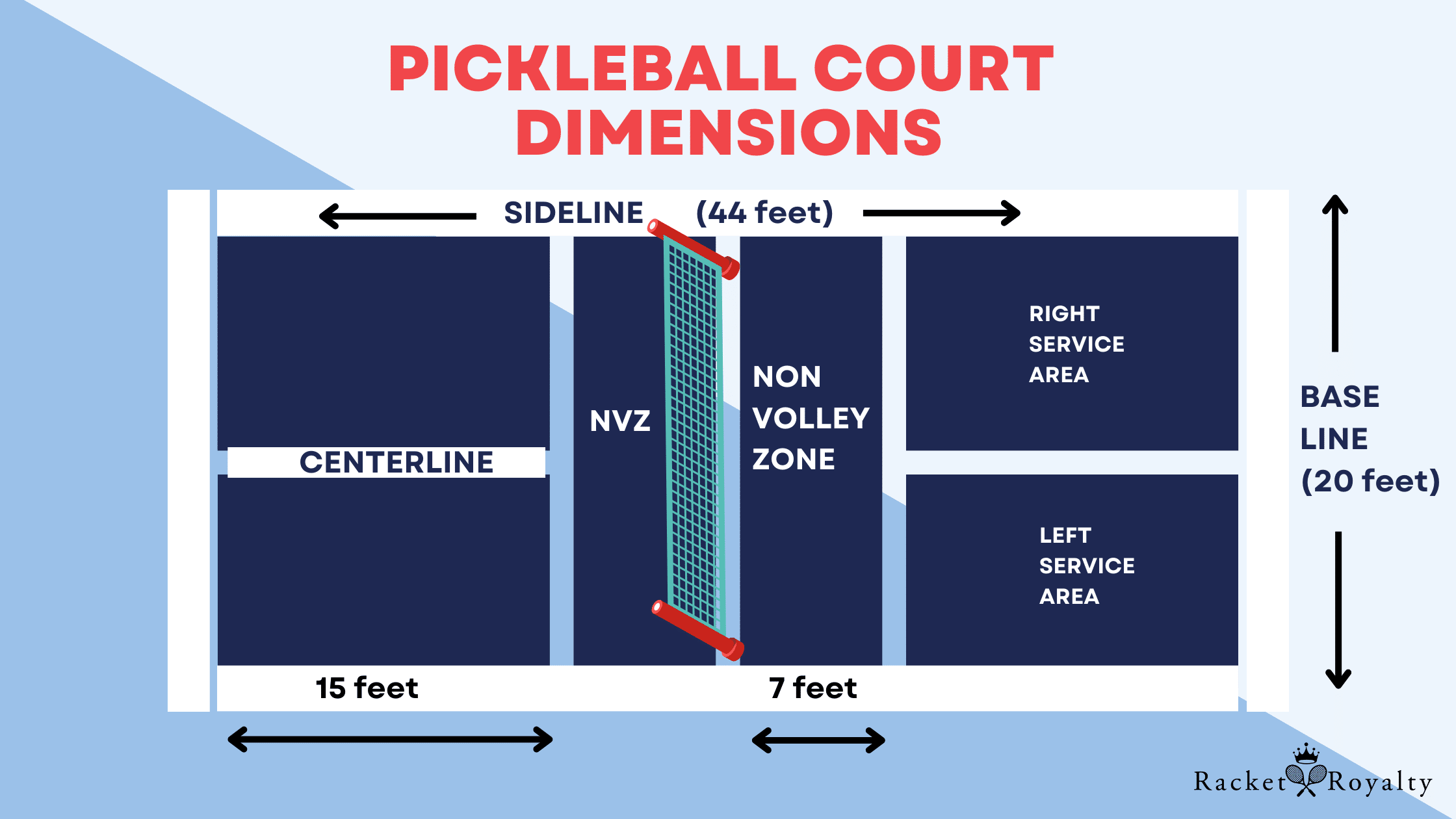Pickleball has gained immense popularity in recent years, captivating players of all ages with its unique blend of tennis, badminton, and ping pong. Whether you’re a seasoned pro or a newcomer to the game, understanding the nuances of pickleball court dimensions is crucial for mastering the game. In this comprehensive guide, we’ll delve into the specifics of pickleball court dimensions, offering insights that will elevate your gameplay.
Why Pickleball Court Dimensions Matter:
The dimensions of a pickleball court play a pivotal role in shaping the dynamics of the game. A regulation-size pickleball court measures 20 feet by 44 feet, with a non-volley zone (also known as the kitchen) extending 7 feet from the net on either side. These dimensions aren’t arbitrary; they are carefully designed to promote fair play, strategy, and skill development.
Court Layout:
A standard pickleball court is divided into specific zones, each serving a distinct purpose. Understanding these zones is essential for players looking to enhance their performance. The court is symmetrically divided into two service courts, each measuring 10 feet by 22 feet. The 7-foot non-volley zone, located on both sides of the net, prevents players from executing volleys too close to the net, adding an extra layer of strategy to the game.
Net Height:
The net height in pickleball is set at 36 inches at the sidelines and 34 inches at the center. This subtle variation ensures that the ball stays in play, requiring players to adapt their shots based on the net’s height at any given point.
Conclusion:
Mastering the game of pickleball goes beyond just having impressive serves or powerful volleys. It involves a deep understanding of the court dimensions and how they shape the flow of the game. By familiarizing yourself with the intricacies of “Pickleball Court Dimensions,” you’re not just playing the game – you’re playing it with precision and strategy, giving yourself a competitive edge on the court. So, the next time you step onto the pickleball court, keep these dimensions in mind and watch your game reach new heights.
FAQ’s
Q1: What are the standard dimensions of a pickleball court?
A1: A regulation-size pickleball court measures 20 feet by 44 feet, with a 7-foot non-volley zone on either side of the net.
Q2: What is the purpose of the non-volley zone in pickleball?
A2: The non-volley zone, also known as the kitchen, is designed to prevent players from making volleys close to the net, adding a strategic element to the game.
Q3: How is the pickleball court divided into zones?
A3: The court is divided into two service courts, each measuring 10 feet by 22 feet. Additionally, the non-volley zone is 7 feet deep on both sides of the net.
Q4: What is the net height in pickleball?
A4: The net height in pickleball is 36 inches at the sidelines and 34 inches at the center.
Q5: Why do pickleball courts have a varying net height?
A5: The variation in net height ensures that the ball remains in play, requiring players to adapt their shots based on the net’s height at different points.
Q6: Can I play pickleball on a modified court size?
A6: While it’s possible to play on a smaller court for recreational purposes, competitive play should adhere to standard dimensions to ensure fair and consistent gameplay.
Q7: Are there specific rules regarding court dimensions in pickleball tournaments?
A7: Yes, official pickleball tournaments follow strict regulations, including court dimensions, to maintain uniformity and fairness across competitions.
Q8: How can understanding court dimensions improve my pickleball game?
A8: A solid understanding of court dimensions empowers players to make strategic decisions, optimize their positioning, and enhance overall gameplay.
Q9: Are there any variations in court dimensions for doubles play?
A9: No, the court dimensions remain the same for both singles and doubles play in pickleball.
Q10: Where can I find official guidelines on pickleball court dimensions?
A10: You can refer to official pickleball organizations or rulebooks for detailed guidelines on court dimensions, ensuring accuracy and compliance with standard regulations.


